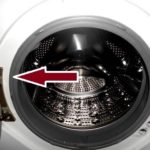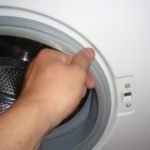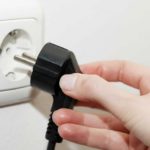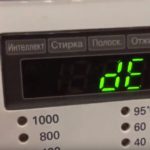We closed the door, pressed “Start”, and instead of filling with water, the display showed the code DE. Basically, this error appears at the beginning of the wash. What to do? What does the DE error mean in LG washing machine? How do I fix the problem myself? You will find answers to all these questions in this article.
Decoding the error
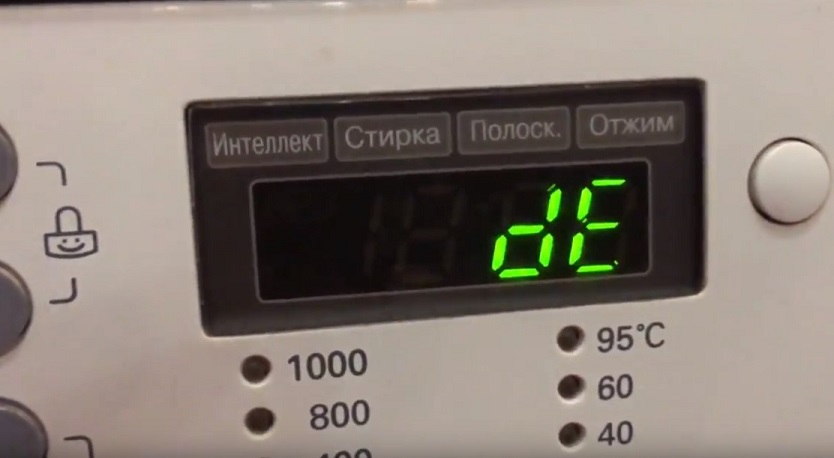
The DE error means that the door of the washing machine is not closed or the door lock does not work. Basically, the cause of the malfunction is the sunroof lock device (HLD), but the hinges, handle, latch hook or control module may also be faulty.
On LG washing machines without a display, the DE code stands for: all temperature indicators, wash mode and rinse indicator flash or light up at the same time. These signals indicate that the hatch door is not closed.
![]() See also - PF error in LG washing machine - what to do, how to decode?
See also - PF error in LG washing machine - what to do, how to decode?
How to fix the error yourself
It would seem that the cause of the malfunction is known and it is only enough to close the hatch more tightly. Often, such actions are enough and the problem disappears. Otherwise, the malfunction occurs for a more serious reason:
- Broken latch hook, sunroof locking device
- Displacement of the spring or clamp, sunroof locking device
- Malfunction of the electronic sensor of the sunroof locking device
- Washing machine control board malfunction
Important: The most common causes of the error are listed here, other lesser-known breakdowns are possible and for their precise determination, it is recommended to call a specialist.
In cases of DE code occurrence, it is recommended to carry out a series of sequential actions that can help get rid of the error yourself.
- To begin with, it is worth checking the tightness of the closing of the hatch, perhaps it is not closed. To do this, you just need to press it harder.
- You should also inspect the entire door for external interference.
- Examine the inside of the hatch door, it is possible that clothes have gotten between the loading hatch and the drum and interferes with tight closing. You should also pay attention to the tab of the retainer, perhaps there are objects on it that interfere with the closure.
- Check the hatch door for distortions, if they are found, it is necessary to tighten the side hinges.
- If none of the above is found or does not help, you should perform a complete reset of the washing machine. To do this, take the following steps in sequence: open the hatch, unplug the machine from the network by unplugging the plug, wait 15-20 minutes, then reconnect the machine and close the hatch.
If after performing the above steps the error persists, then it makes sense to consider other causes of the malfunction.
Faults requiring repair
Use the following table to determine the cause of the error:
| Description of the problem | Cause of error | Solution |
| The hatch door does not fully close or lock. | The latch hook is badly worn or broken | Element replacement |
| The door closes and locks, but the machine does not start the wash program. | The lock device is out of order | Element replacement |
| In washing, rinsing or spinning mode, the washing machine stopped working and generated a DE error. There is a burning smell. | Defective control module. Most often, the microcircuit "suffers" due to burnout of contacts during power surges or due to the ingress of water into the electronics. | It is necessary to remove the front panel by dismantling the upper part of the machine. Then remove the board. The damaged areas are immediately visible - they turn black, the caps of the capacitors become convex, traces of ruptures are visible. When a faulty part is found, it is soldered off, and a new one is installed in its place. |
| The handle does not work and the door is not fixed. | Broken handle | Element replacement |
| The hatch door does not close and is skewed | Loop wear | Adjusting the loops or replacing them completely |
Conclusion
Malfunctions in the washing machine are not excluded from its life cycle. Therefore, in the event of a common error, people who have read this article will fully be able to determine the cause of the inconvenience and will often be able to correct it themselves. But it is always better to avoid the error than to correct it. So, do not forget about the rules of operation and respect.
See also:

